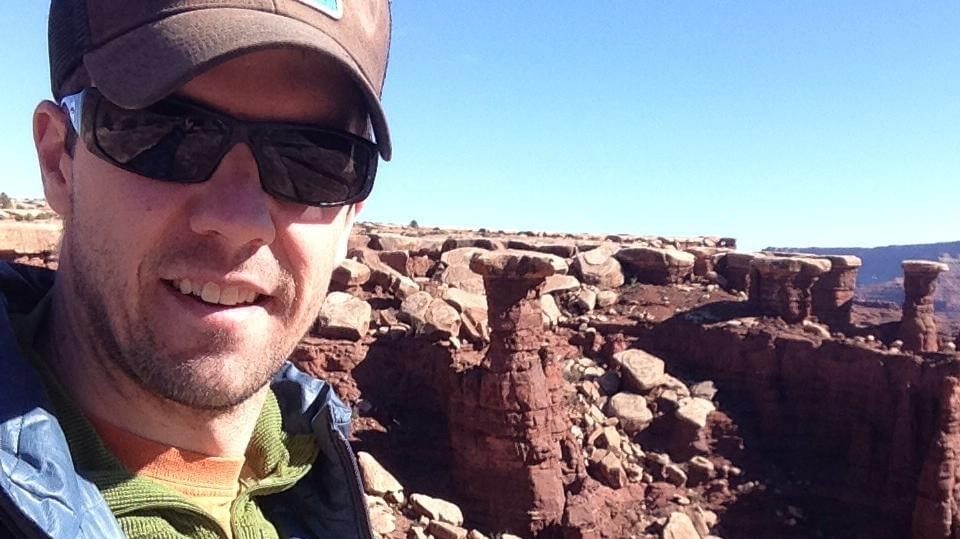Some information may be outdated.
The following is part of a series of stories from Science Moab’s School to Science program, which pairs students with scientist mentors in the field, the lab, and museums. School to Science launched in August 2021 and has now served almost 60 students from Grand County High School and the Grand County Student Career and Success Center.
Here, Science Moab speaks with program mentor Mary Langworthy, Public Programs Manager at the Moab Museum, and Klayre Humphreys, an incoming senior at Grand County High School. Through School to Science, Mary has hosted six day-long job shadows and an internship with local students. Klayre shadowed Mary at the Museum in the spring of 2024 and ended up delving into the world of shark teeth, which ultimately helped Moab Museum staff update and enhance an exhibit.

Science Moab: Mary, you have been a School to Science mentor several times. What is it that makes you want to do this?
Langworthy: It’s really fun. Science is incredible. It does so much for all of us in our daily lives. I think sharing that excitement and enthusiasm with people who are at different stages in their science career—from high school to different professional stages—is a highlight [of my work] and such a blast. The School to Science program really sets students up for cool opportunities to get out of the classroom and see the different ways that science comes to life in our community. Whenever Science Moab sends a student our way, I feel like they’re always really inquisitive and excited to be there.
Science Moab: Klayre, you are a veteran with School to Science job shadows. What do you enjoy about these opportunities?
Humphreys: I just love hands-on learning and being able to leave school for a day to geek out with a bunch of scientists and people who know what they’re doing. I’ve done a couple of paleontology job shadows, I’ve sorted bug [specimens] for a day, measured the vibrations of an arch and taken a 3D model of Broken Arch. These job shadows have really helped me wake up and build confidence in talking with adults in a professional environment. It’s helped me learn of all these different fields of science I wouldn’t have even thought could be a thing.
Science Moab: Mary, how did the Museum work with Klayre?
Langworthy: We started by looking around the Museum’s gallery, paying attention to some of the considerations that a scientist or curator or a science communicator might be taking note of as they wandered around through the Museum. We immediately got into a conversation about some of the challenges of curation and ethical quandaries like what museums do behind the scenes, which was a ton of fun.
Later in the day, we moved towards working on some exhibit text about specific objects on display that could use a little bit of a refresh. We were exploring the geology and paleontology part of the exhibit, and the specimen that jumped out at us was a really small piece of rock that had two different shark teeth in it. Then Klayre comes to tell me that she is a collector of shark teeth and knows a lot about this topic. So, we were not starting at square one; Klayre had a lot of enthusiasm and knowledge and knew right where to dive in. It felt like a very auspicious, fun coincidence that Klayre had a lot of expertise in this particular area, and the Museum really got to benefit from that, and Klayre got to practice some job skills too.
Science Moab: Klayre, what can you tell us about your experience of being a science communicator for a day?
Humphreys: It’s something that I will probably carry into college. It sparked a new passion. I’m super-interested in joining the science communication space, so that was a big eye opener.
Science Moab: Mary, in addition to your work at the Museum, you also have training in geology. What’s your favorite part about being a scientist?
Langworthy: You’re constantly learning, you’re not ever done. You go to school and build some foundational skills in whatever scientific discipline you decide upon, but the curiosity just never stops and having some tools to help you learn more about that discipline throughout your life—no matter where your career takes you—just feels really special.
Science Moab: And Klayre, what do you love so much about science?
Humphreys: It’s just cool being able to understand the natural world around you. I’m someone who likes explanations as to why things tick…why are these happening? Being able to follow scientists around through School to Science is slowly filling in the gaps for me.
Appreciate the coverage? Help keep local news alive.
Chip in to support the Moab Sun News.





